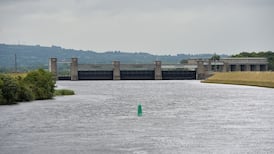Air pollutants being emitted by homes burning solid fuels and from urban traffic are a continuing health threat and are likely to prevent Ireland meeting stricter World Health Organisation limits due in 2026, the Environmental Protection Agency has warned.
In its latest air quality report, it finds levels of particulate matter – tiny particles emitted during burning of coal, wood and especially peat in heating households, and nitrogen dioxide arising from traffic in urban areas are the country’s worst air pollutants.
Dr Micheál Lehane, director of the EPA’s Office of Radiation Protection and Environmental Monitoring, said Ireland’s monitoring network – recently expanded to 115 stations – was indicating air pollution “is not just a city phenomenon”.
“If we want to achieve our ambition of clean air for everyone, everywhere, all year round, then we need to address the emissions from residential heating and invest in transport systems right across the country,” he said.
READ MORE
Understanding of air pollution risk has advanced so much in recent years that the WHO advises there are no safe levels of outdoor air pollution, which claims an estimated 4 million deaths globally every year from stroke, heart disease, lung cancer and chronic respiratory diseases including asthma. The European Environment Agency has estimated 1,600 premature deaths occur annually in Ireland due to poor air quality from PM2.5, the most dangerous form of fine particulate matter.
This prompted the Government to switch from less onerous EU guidelines in a legally-binding clean air strategy and in 2022 it introduced strict new solid fuel regulations. Ireland is compliant with EU limits in the case of the four worst pollutants but not on track to meet interim 2026 targets (WHO Interim Target 3) for two forms of particulate matter as well as nitrogen dioxide, sulphur dioxide and ozone.
“Meeting the 2030 and 2040 targets becomes incrementally more challenging unless we take action,” the report adds.
Ireland is committed to fully achieving WHO guideline values by 2040.
“Despite comparing favourably with many of our European neighbours, Ireland’s 2023 monitoring results would exceed the soon-approaching 2026 targets,” the report finds.
High levels of particulate matter pollutants are often associated with cold, still weather from late autumn through to early spring, when incidents of poor air quality of one to two days duration can occur. Using less solid fuel and cleaner fuels to heat homes, making them more energy efficient and reducing use of cars to go to school, work and play are actions that will contribute towards achieving the new targets, it says.
The report calls on local authorities to facilitate people to make cleaner and healthier air quality choice by investing in public transport infrastructure and promoting active travel, notably to “install and maintain safe footpaths and cycle lanes to continue to increase active travel as a viable and safe alternative to car use and associated nitrogen dioxide emissions”.
“Progress on residential retrofit programmes will help to reduce fine particulate matter pollution but vigilance is also needed to ensure that only compliant solid fuel, such as low smoke coal and dried wood, is being sold to householders,” said EPA programme manager Roni Hawe.
“We need to see a strong inspection campaign by local authorities this winter to make sure all retailers only stock and sell approved solid fuel,” she added.
The Air Quality in Ireland 2023 report is available on the EPA website. The EPA continually monitors air quality across Ireland and provides the air quality index for health and real-time results online. Results are updated hourly on the website, and people can log on at any time to check whether the current air quality is good, fair or poor.
- Sign up for push alerts and have the best news, analysis and comment delivered directly to your phone
- Join The Irish Times on WhatsApp and stay up to date
- Listen to our Inside Politics podcast for the best political chat and analysis










